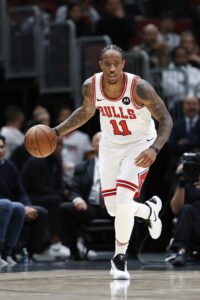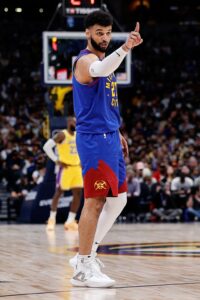As we explain in our glossary entry on veteran contract extensions, rookie scale extensions have historically been the most common form of contract extension in the NBA. However, the league’s latest Collective Bargaining Agreement loosened the rules on eligibility for veteran extensions and made them more financially advantageous, especially for players who don’t expect mega-deals.
As a result, we’ve seen a substantial bump in veteran contract extensions in recent seasons. During the 2021/22 league year, 21 players signed them, and that total jumped to 23 players in 2022/23. Many more have already followed suit in ’23/24 and others will join that list before June 30, 2024.
[RELATED: 2023/24 NBA Contract Extension Tracker]
 Certain extension-eligible players, such as OG Anunoby, may prefer to wait until free agency to sign a new contract, since the biggest raise Anunoby can receive on an extension would be far less than the maximum contract he’d be eligible to earn on the open market.
Certain extension-eligible players, such as OG Anunoby, may prefer to wait until free agency to sign a new contract, since the biggest raise Anunoby can receive on an extension would be far less than the maximum contract he’d be eligible to earn on the open market.
The maximum starting salary a player like Anunoby can receive in a veteran extension is up to 140% of his current salary. A player on a more modest contract can receive a maximum starting salary worth up to 140% of the NBA’s estimated average salary.
For this season, 140% of the estimated average salary would work out to a $16,741,200 salary in the first year of a contract extension. A player who signs an extension that fits that bill could get up to four years and approximately $75MM. Zach Collins is an example of a player who has already signed this type of veteran extension, though his deal was for two years instead of the maximum four.
Now that the regular season is underway, the group of veterans eligible for contract extensions has shrunk, since players with more than one year left on their contracts aren’t permitted to sign an in-season extension. But there are still a number of veterans in the final year of their respective contracts who remain eligible for extensions right up until the last day of the current league year (June 30).
Listed below are the players who meet the criteria for a veteran extension. Players who were recently traded can be extended, but they have to wait for six months after the trade to sign a contract longer than three total years (including the current season) with a raise exceeding 5%. If a player below is noted as having “limited” eligibility until a certain date, that’s why.
Once a player regains his full extension eligibility, he becomes eligible to sign an extension of up to five total years (including the current season) with a 40% first-year raise (or 40% of the estimated average salary).
Additionally, extension-eligible players with a player or team option for 2024/25 would have to eliminate that option year as part of an extension agreement in order to meet the necessary criteria.
Here’s the full list of veterans currently eligible for contract extensions:
Atlanta Hawks
Boston Celtics
Brooklyn Nets
Charlotte Hornets
Chicago Bulls
Cleveland Cavaliers
Dallas Mavericks
Denver Nuggets
Detroit Pistons
Golden State Warriors
Houston Rockets
Indiana Pacers
Los Angeles Clippers
Los Angeles Lakers
Memphis Grizzlies
Miami Heat
Milwaukee Bucks
Minnesota Timberwolves
New Orleans Pelicans
New York Knicks
Oklahoma City Thunder
Orlando Magic
Philadelphia 76ers
Phoenix Suns
Portland Trail Blazers
Sacramento Kings
San Antonio Spurs
Toronto Raptors
Utah Jazz
Washington Wizards
 Murray sustained the injury in the second quarter of Saturday’s game vs. Chicago. In addition to missing the rest of that contest, he also sat out Monday’s game and will likely be sidelined for the remainder of November, according to Wojnarowski.
Murray sustained the injury in the second quarter of Saturday’s game vs. Chicago. In addition to missing the rest of that contest, he also sat out Monday’s game and will likely be sidelined for the remainder of November, according to Wojnarowski. 11:50am: The Pistons have reached an agreement to bring back free agent forward
11:50am: The Pistons have reached an agreement to bring back free agent forward  Certain extension-eligible players, such as
Certain extension-eligible players, such as 
